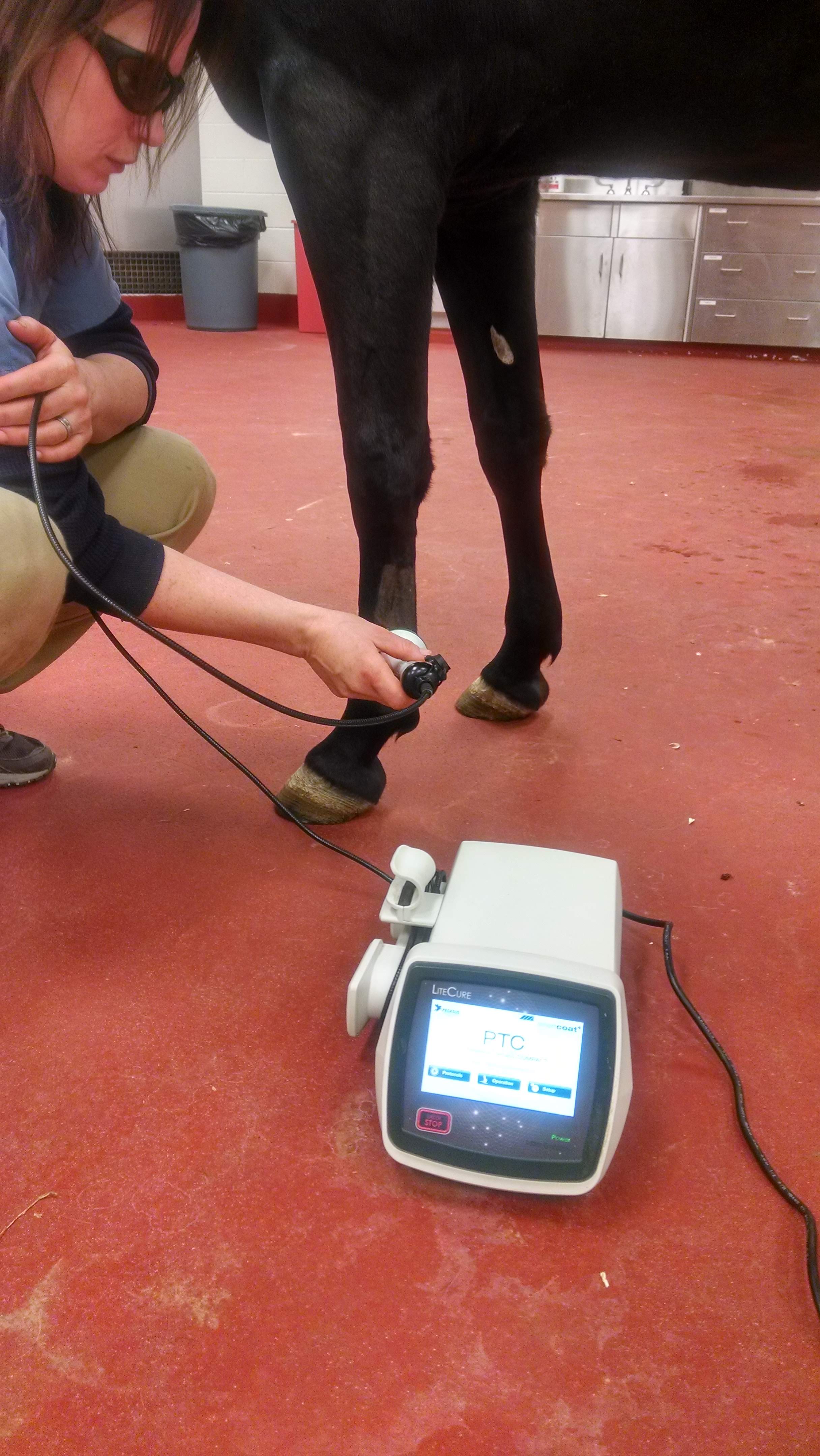Exploring the Holistic Approach of Equine Therapy for Individual Growth
Exploring the Holistic Approach of Equine Therapy for Individual Growth
Blog Article
Reviewing the Performance of Laser Treatment in Horse Therapy for Injury Recovery
The assessment of laser therapy's efficiency in equine injury recovery hinges on multiple variables, consisting of recuperation time, pain reduction, and cells regeneration. Veterinarians frequently observe remarkable results with laser therapy compared to conventional techniques, placing it as a vital aspect in equine treatment. Equine Therapy.

Understanding Laser Therapy
Laser therapy has actually become an essential tool in vet medication, particularly in the treatment of equine conditions. Recognized for its non-invasive nature and efficiency, laser treatment entails the application of details wavelengths of light to boost tissue repair and decrease swelling. This restorative modality is progressively preferred for its capability to accelerate the healing process in horses experiencing a variety of bone and joint injuries and persistent problems.
The key device behind laser therapy is its capacity to enhance cellular functions. Additionally, laser treatment advertises vasodilation, boosting blood flow and oxygen distribution to damaged tissues, thus expediting healing.
In equine medicine, laser treatment is especially beneficial for conditions such as tendonitis, osteoarthritis, and wound recovery. The method is admired for its pain-relieving residential or commercial properties, allowing steeds to regain flexibility and function much more swiftly. Veterinarians additionally value its minimal adverse effects contrasted to various other treatment techniques, making it a trustworthy and secure alternative for equine treatment.
Exactly How Laser Therapy Works
To recognize exactly how laser therapy functions, it is necessary to look into the interaction between light power and organic tissues. Laser treatment, also known as Low-Level Laser Treatment (LLLT) or photobiomodulation, employs specific wavelengths of light to pass through cells and promote mobile processes. The system hinges on the absorption of photons by cell chromophores, largely within the mitochondria, which are vital for energy production.
Upon absorption, these photons set off a collection of biochemical modifications, enhancing mitochondrial feature and causing increased adenosine triphosphate (ATP) production. This increase in ATP increases mobile metabolic rate, advertising cells repair and regeneration. Additionally, laser treatment regulates inflammatory responses by impacting cytokine levels and decreasing oxidative stress, consequently minimizing pain and swelling.
An additional substantial element of laser therapy is its duty in improving microcirculation. The treatment promotes vasodilation, enhancing blood flow and oxygen distribution to damaged cells. This assists in the removal of mobile debris and sustains the expansion of fibroblasts and collagen synthesis, important for injury healing.
Clinical Proof
The efficacy of laser therapy in equine treatment has been validated with different medical researches, showcasing its therapeutic potential throughout a variety of conditions. A number of regulated tests and observational researches have recorded significant enhancements in tissue repair work, discomfort decrease, and general rehab timelines. As an example, a research performed by Turner et al. (2012) showed that equines treated with low-level laser therapy (LLLT) for tendon injuries showed This Site accelerated healing compared to those getting traditional therapies. The study highlighted a marked decrease in inflammation and boosted collagen development.
Similarly, study by Johnson and coworkers (2015) concentrated on equine muscular tissue injuries, exposing that laser therapy dramatically sped up muscle fiber regrowth and decreased muscle rigidity. These findings were proven by histological evaluations showing better muscle tissue company. In addition, medical analyses have actually revealed that laser treatment can ease persistent conditions such as osteoarthritis. A research study by Smith et al. (2018) reported that equines with osteoarthritic joints experienced notable pain relief and enhanced variety of activity complying with a routine of laser treatment sessions.
Vet Insights
Vet experts have actually progressively identified the value of laser therapy in equine treatment, citing both empirical evidence and firsthand experience. Dr. Jane Smith, a leading equine vet, keeps in mind that laser therapy has revealed impressive efficiency in lowering swelling and accelerating cells repair work.
Veterinarians additionally value the versatility of laser treatment. It can be utilized for a variety of conditions, from surface injuries to much deeper musculoskeletal injuries. Dr. Emily Brown highlights its utility in treating conditions like tendonitis and osteoarthritis, where conventional therapies often fall short. She aims out that laser treatment can be tailored to the particular demands of each steed, making certain optimum end results.

Practical Factors To Consider
A key element of applying you can check here laser therapy in equine treatment includes recognizing the functional factors to consider that guarantee its efficiency and safety and security. Most importantly, it is critical to select the appropriate laser device, as various types differ in wavelength, power, and penetration deepness. Vets must be fluent in these specifications to tailor therapy protocols effectively to each injury kind
In addition, the look at this web-site frequency and duration of laser therapy sessions require mindful preparation to maximize restorative benefits while lessening any kind of prospective damaging results. Constant surveillance of the equine's action to therapy can direct required changes in the therapy routine. Establishing a secure and regulated atmosphere during treatments is additionally important to avoid unintentional direct exposure to laser discharges, which can harm both the horse and the trainer.
Training and accreditation of personnel carrying out laser treatment are extremely important to guarantee proper method and to promote safety criteria. Additionally, preserving accurate records of each session, consisting of laser settings and observed results, is important for evaluating the general efficiency of the therapy and for making data-driven choices.
Verdict
Laser therapy has emerged as an effective technique in equine injury rehab, using significant benefits in recovery time, pain alleviation, and tissue healing. Medical research studies highlight considerable renovations in conditions such as tendonitis and osteo arthritis, credited to improved cellular feature and boosted ATP production. Vet monitorings corroborate these searchings for, highlighting exceptional end results compared to typical therapies. For optimum results, continuous tracking and customized therapy procedures remain essential in leveraging the full capacity of laser treatment in equine care.
Report this page